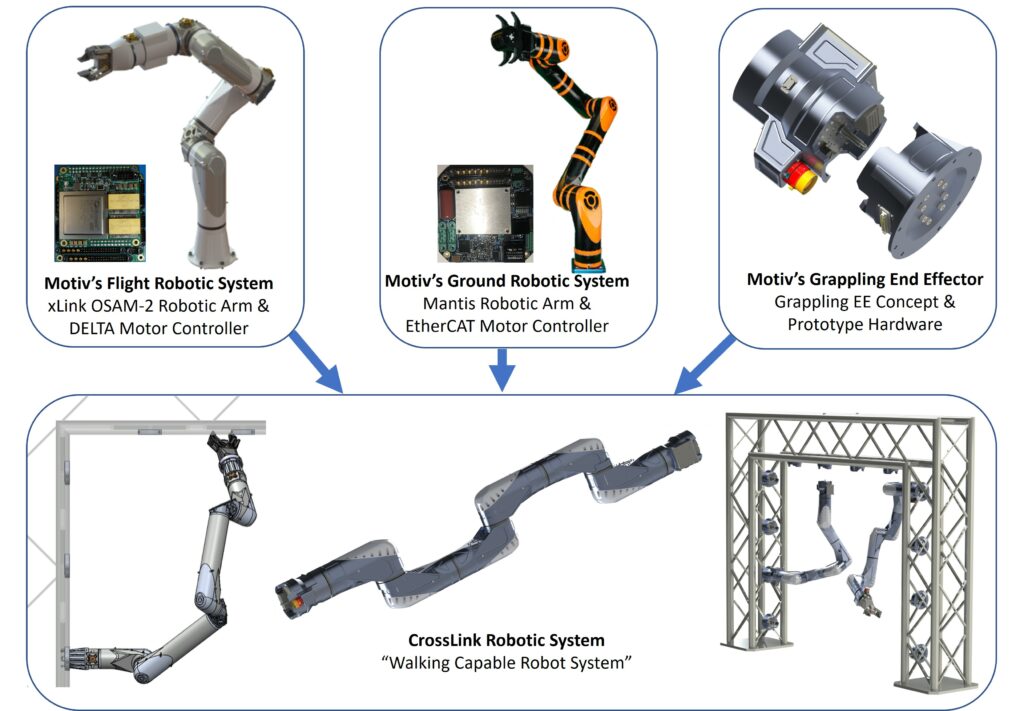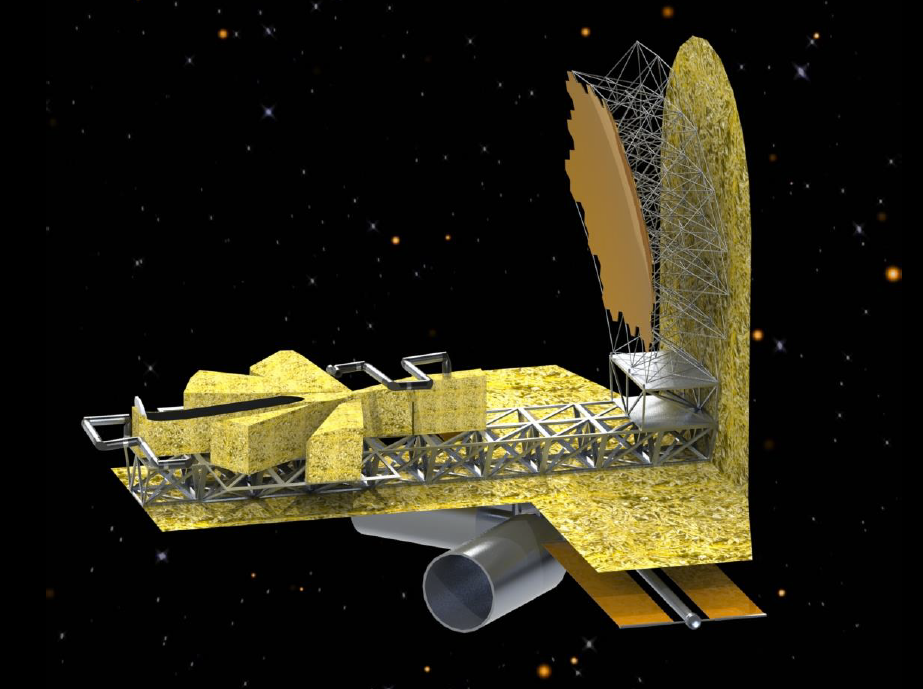News

A Look at Motiv’s Work with NASA on CrossLink
Since the launch of Sputnik in 1957, satellites have had a limited operational lifetime in Earth orbit. However, with the increasing number of orbital objects in the limited area beyond the atmosphere and more services relying on space-based assets, the need to extend the service life of spacecraft has become apparent. To meet this need, NASA is embarking on a series of On-orbit Servicing, Assembly, and Manufacturing (OSAM) missions.
As an integral part of these missions, Motiv Space Systems’ CrossLink, which integrates existing and new robotics technologies, is being developed in conjunction with NASA’s Goddard Space Flight Center. The project, Phase II of which began in 2022, seeks to demonstrate the effectiveness of Motiv’s systems to perform assembly and servicing of spacecraft while they are in Earth orbit. These capabilities will be needed for both NASA and commercial companies to extend the lifetime of existing satellites through either upgrades and enhancements or repurposing.

Components of Motiv’s CrossLink project. Credit: NASA, GSFC
CrossLink will combine Motiv’s modular xLink robotic arm, DELTA motor controller, and EtherCAT architecture with specialized grappling and tool end effectors to provide the necessary hardware and software capabilities that will enable on-orbit spacecraft servicing. The project is being funded through a NASA SBIR contract to be demonstrated on the OSAM missions. However, the implications for these capabilities extend beyond NASA-operated spacecraft.
NASA’s OSAM missions seek to emphasize modularity, scalability, and affordability. CrossLink addresses these areas through the xLink robotic arm, which has been developed to provide spacecraft operators with access to advanced robotic arm capabilities in a customizable modular package at a fraction of the cost of legacy systems. Motiv will seek to work with NASA to demonstrate CrossLink’s capabilities on missions such as the In-Space Assembled Telescope and Internal Gateway Robotics.

NASA In-Space Assembled Telescope concept. Credit: NASA
In a bid to extend the usefulness of existing spacecraft, many commercial companies are also interested in on-orbit servicing capabilities. Many commercial satellites could be upgraded or enhanced, with additional fuel or new electronics, or completely repurposed with new systems utilizing an existing on-orbit bus. The ability to carry out these missions robotically with the CrossLink system will increase access to space-based assets for organizations around the world.
In addition to servicing satellites in Earth orbit, CrossLink will provide for the assembly and manufacture of new spacecraft in orbit. This capability will enable spacecraft that are too large or delicate to be launched in an assembled state to be developed. Using CrossLink, NASA and commercial entities will be able to further advance the science and engineering that is carried out in Earth orbit using larger and more advanced satellites.
Motiv’s xLink robotic arm is designed to suit a variety of missions by being scalable and modular. When combined with one of Motiv’s robotic controllers and end effectors, all of which are the basis for CrossLink, any company will have the ability to perform on-orbit servicing of spacecraft. Consequently, the cost of operating space-based assets can be reduced because entirely new spacecraft will not need to be launched as existing assets are serviced.
Working with NASA to develop and demonstrate the CrossLink platform will enable Motiv to combine several key existing and new robotic system technologies. Through the OSAM missions and other NASA projects, the CrossLink capabilities will be demonstrated, with the ultimate aim of making the system available to commercial companies seeking to extend or enhance the operation of existing spacecraft.